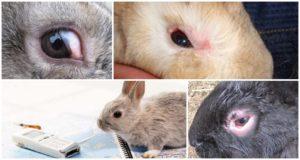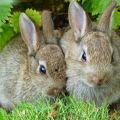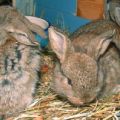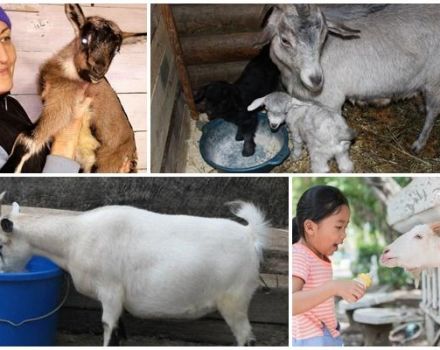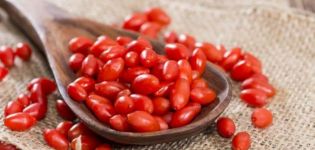What and how many times can you feed a decorative rabbit at home
When you acquire an animal for keeping at home, they carefully think over all aspects of its maintenance, from housing to visits to the veterinarian, from the possibility of walking to existing diseases and protection from them. And the main question for most owners is how to feed a domestic decorative rabbit so that it remains strong, strong and healthy.
What do rabbits eat at home?
To avoid gross mistakes in feeding your pet, you must have a minimum amount of knowledge on the selection of food and making a menu for rabbits. The diet should be balanced, complete, and contain enough calories, vitamins and minerals. For this purpose, it includes coarse and juicy foods, cereals, compound feed, specialized additives.
Roughage
In nature, rabbits eat what they can easily get, including branches of trees and shrubs, leaves, dry grass. When maintaining a house, they need to provide similar products, for example, hay, the same plant shoots, tough pieces of branches. This is necessary because rabbits, like all rodents, constantly grow teeth. Without constant grinding while eating, they will grow, causing suffering to animals and interfering with normal food intake.
Juicy natural feed
This list includes fresh grass, vegetables, and silage. They supply the body with vitamins, minerals, saturate with useful juices, diversify the menu, make it complete. Carrots and cabbage are considered traditional food for rabbits, but this is a misconception for people far from animal breeding or veterinary practice. In fact, these vegetables can be given in limited quantities because carrots are high in carbohydrates, and excess cabbage will cause bloating.

But domestic rabbits will gladly eat stalks of Swiss chard, celery, broccoli and cauliflower shoots and inflorescences, kale, carrot leaves, strawberries, strawberries, raspberries, romaine lettuce. From root crops in limited quantities, you can give carrots, beets, turnips, rutabagas, parsnips.
Fruits and berries
Many people are of the opinion that almost anything can be fed to rabbits, including fruits and berries. Indeed, these animals are happy to eat juicy crunchy apples, can gnaw other fruits, and have a snack with a sweet berry.But such foods should not be the basis of the diet, because they contain a lot of carbohydrates and sugars, which can cause digestive upset in domestic rabbits.

Green products for rabbits
Rabbits can be given spinach (without fanaticism, because it contains oxalic acid), collard greens, young shoots and herbs of kitchen herbs and some spices, for example, parsley, celery, dill, coriander, rosemary, sage, thyme, mint. But all these products cannot be the basis for the daily nutrition of pets, since they are additives to the basic assortment. It should consist of hay, grass, branches with the addition of succulent feed, leaves, fruits, grains.
Vitamin and mineral supplements
In order for pets to be strong and healthy, to live for a long time, their food must contain many useful components. In summer, they get them from fresh natural feed, therefore, mineral and vitamin supplements are most often added to food in the cold season or for weakened, sick, young rabbits, pregnant and lactating females.
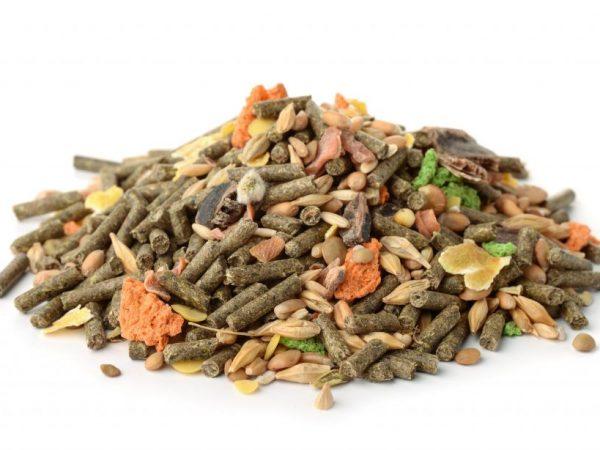
They are not used in every feeding, but as needed, calculating the dosage for each specific animal. It is best if the dosage of supplements is calculated by a professional.
Daily diet
The ideal food for domestic rabbits can be considered specially prepared compound feed. Contains essential nutrients, vitamins and minerals, it is a balanced ready-to-use pet food that makes life easier for pet owners. However, it can make up no more than 10% of the total food volume, since it can cause metabolic disorders. It is given once a day, supplemented with grass, hay, succulent feed.
Although animals must receive food on a daily basis, it is harmful to feed it too often or too little. A pet must be accustomed to the regimen, giving food strictly at certain times.
This memo for novice rabbit breeders will help to correctly calculate and build a menu:
- Basis of the diet: hay - 80%.
- Concentrated feed - 10%.
- Grass, vegetables, fruits - 10%.
- Nuts, sunflower seeds, croutons, apples - occasionally and only as a promotion or delicacy.

The rabbits should have unlimited water all the time. Its purity must be monitored.
Not recommended and dangerous products for decorative rabbits
It is forbidden for domestic rabbits to give plants belonging to the family of Buttercup, Aroid, Umbrella, Solanaceae, Liliaceae, Cruciferous, Clove, Noricum. They are toxic and contain poisonous substances that can not only poison the animals, but also cause death.
It is necessary to limit the use of white cabbage, carrots, cooked potatoes, oak branches, conifers. You cannot give food from your table, especially fresh bread, pastries, sweets, fatty dishes, semi-finished products. Rabbits can happily nibble on a piece of chocolate with nuts and even eat toffee, but such food can become a source of illness and even cause of death for them.

How to prepare food for the winter
The basis of food for decorative rabbits, like those intended for industrial breeding, is high-quality hay. It can be harvested throughout the warm season, carefully choosing the varieties of grass. Timothy, clover, alfalfa, nettle are ideal.
You can collect tree branches, avoiding those that are harmful or dangerous to pets in large quantities. Dried brooms will prove to be invaluable support in winter, when it will be impossible to get them in nature. Coniferous branches are also harvested in small quantities. Greens are rich in vitamins, but excess essential oils and resins can harm digestion.
It is also useful to collect and dry the tops of kitchen plants and herbs. If it is possible to store root vegetables, for example, in a basement or in a cold place, in a large refrigerator, it is a good idea to stock up on cabbage cabbage, carrots, other useful root vegetables, pumpkin, apples. Using chicken eggs, you can collect peeled shells, dry, grind into flour and use as a mineral feed.
Feed storage methods
Dry brooms and hay are stored in a ventilated cold room with low humidity. Juicy feed is best stored in a cellar, basement or refrigerator; compound feed is kept in ventilated boxes, in dry rooms. It is important to periodically inspect your stocks to check for mold, insects or rodents. Spoiled or contaminated food must not be used for feeding.

